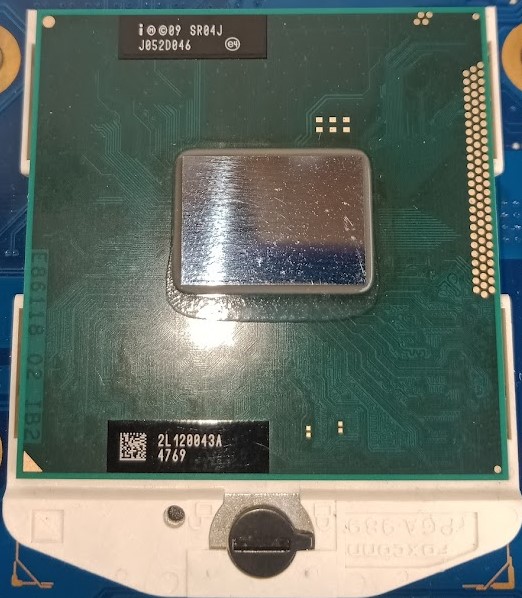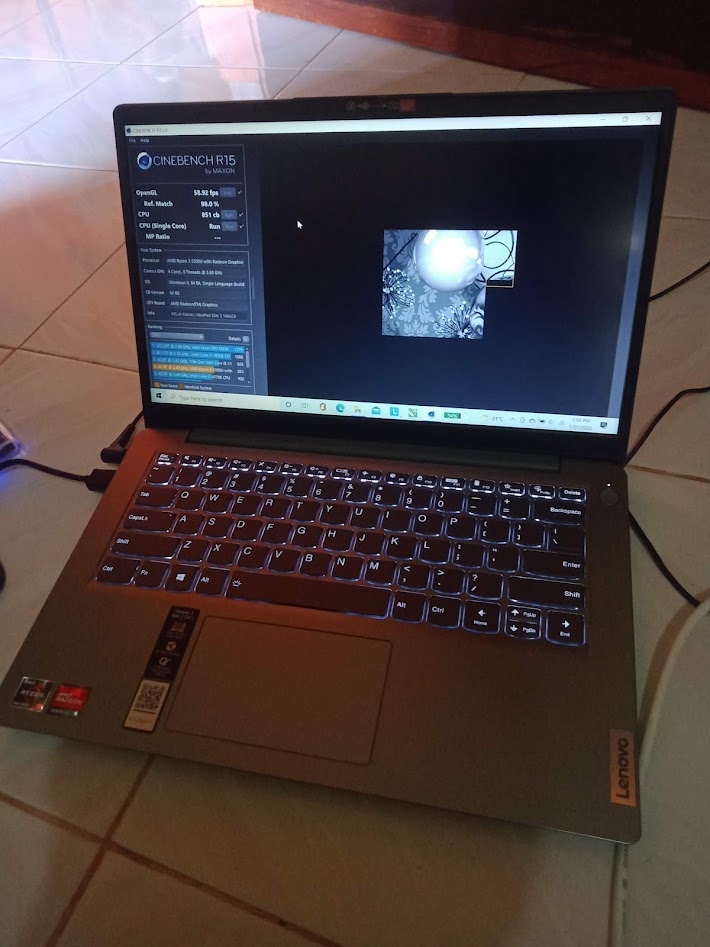Comparing: AMD Ryzen 3 5300U vs Intel Core i3 2330M
In this comparison, we analyze two Processors: AMD Ryzen 3 5300U and Intel Core i3 2330M, using synthetic benchmark tests to evaluate their overall performance. This side-by-side comparison helps users understand which hardware delivers better value, speed, and efficiency based on standardized testing. Whether you're building a new system or upgrading an existing one, this benchmark-driven evaluation offers valuable insights to guide your decision.
Specification Comparison Table
This specification comparison presents technical details of several devices or components to help you understand the key differences between each option. Use this table as a reference to determine which device best suits your needs.
| Specification | AMD Ryzen 3 5300U | Intel Core i3 2330M |
|---|---|---|
| Architecture | x86 | x86 |
| Technology | 7 nm | 32 nm |
| Clock | 2.6 GHz - 3.8 GHz | 2.2 GHz - - |
| Core/Thread | 4 / 8 | 2 / 4 |
| Segmen | Mobile | Mobile |
Submission Comparison Table
This submission comparison table displays the number and details of benchmark data submissions from various devices or components. This information helps you understand the performance based on the benchmarks that have been tested, as well as providing an overview of the consistency and popularity of the available benchmark results.
| No. | Benchmark Software | AMD Ryzen 3 5300U | Intel Core i3 2330M |
|---|---|---|---|
| 1 | Cinebench - R15 |
851 cb |
163 cb |
Submission Comparison Chart
This chart visualizes the benchmark scores comparison between two hardware devices based on submitted data.
Media Gallery
A collection of photos of tested hardware. These images can help you identify the physical form, model, and variant of the hardware in question. These photos are from our own documentation, and if they are not available we may not be able to document them.
About Hardware AMD Ryzen 3 5300U
Released in 2021, the AMD Ryzen 3 5300U is a Zen 2 architecture-based mobile processor designed for ultrabook laptops and power-efficient devices. The processor comes with a configuration of 4 cores and 8 threads, a base speed of 2.6 GHz, and can increase to 3.8 GHz through the Boost feature. With a 7nm fabrication process, the Ryzen 3 5300U offers excellent power efficiency without sacrificing performance, making it an ideal choice for mid-range laptops that prioritize a balance between battery life and performance. With a TDP of only 15W, this processor is perfect for thin and light laptop designs without the need for a bulky cooling system.
One of the main advantages of the Ryzen 3 5300U is the presence of the Radeon Vega 6 integrated GPU with 6 Compute Units running at a frequency of 1500 MHz. This GPU provides competitive graphics performance for the integrated graphics segment, capable of running light games such as Valorant, CS:GO, or Genshin Impact at low-medium settings with decent frame rates. Compared to Intel's same-generation integrated graphics, the Vega 6 shows superior performance, especially when it comes to video acceleration and light graphics tasks.
In synthetic benchmarks like Cinebench R23, the Ryzen 3 5300U is able to score around 5147 points for multi-core and 990 points for single-core, making it one of the best entry-level processors for everyday use. This performance is capable enough for a variety of computing tasks, from browsing, multimedia, to productive work such as document processing, coding, and light editing for both photos and videos. Laptops with Ryzen 3 5300U can even run Windows 11 smoothly thanks to the support of modern architecture and the latest security features such as fTPM.
Testing was conducted on a Lenovo IdeaPad Slim 3 14ALC6 device with 8GB DDR4 3200MHz dual channel RAM, Windows 10 and Windows 11 operating systems. The combination of the Ryzen 3 5300U processor and dual-channel RAM delivers highly responsive performance in everyday use, including when running multiple applications at once or opening a large number of browser tabs. Overall, the AMD Ryzen 3 5300U is the ideal processor for laptop users who need high performance with low power consumption and a price that remains affordable.
Hardware Detail:
Device: Lenovo IdeaPad Slim 3 14ALC6
RAM: 8GB DDR4 3200MHz Dual Channel
OS: Windows 10, Windows 11
Saturday, 12 March 2022 11:04:31 | Update: 1 month ago
About Hardware Intel Core i3 2330M
The Intel Core i3-2330M is a dual-core mobile processor launched in 2011 as part of Intel’s second-generation Sandy Bridge lineup. Designed for mid-range laptops, this processor features 2 cores and 4 threads thanks to Intel Hyper-Threading Technology, allowing it to handle light to moderate multitasking workloads efficiently. Operating at a fixed clock speed of 2.2 GHz and built on the 32nm process, the i3-2330M does not include Intel Turbo Boost, which limits its ability to dynamically increase performance under heavier loads, but it remains a solid choice for everyday use.
With a TDP of 35W, the i3-2330M balances power consumption and performance reasonably well for its era. It integrates Intel HD Graphics 3000, a GPU with a base clock of 650 MHz and a dynamic frequency up to 1.1 GHz. While not designed for modern gaming or demanding graphic applications, this integrated GPU handles HD video playback, basic 3D rendering, and older or lightweight games at low settings with relative ease. Users looking for casual computing and multimedia playback will find it sufficient.
In real-world usage, the Core i3-2330M performs well for standard computing tasks such as web browsing, streaming, office productivity (e.g., Word, Excel), and simple photo editing. Its Hyper-Threading capabilities give it a performance edge over older dual-core processors that lack thread duplication. However, the lack of Turbo Boost and a relatively low base frequency mean that it can struggle under CPU-intensive workloads like video rendering or large spreadsheet processing, especially when compared to more modern CPUs.
This specific configuration was tested on a SAMSUNG 300E4Z, a laptop originally shipped with an Intel Celeron B815 processor but later upgraded to the i3-2330M for better performance. With 4GB of DDR3 dual-channel memory and Windows 7 installed, the system runs smoothly for basic daily use, making the i3-2330M a practical upgrade option for budget-conscious users seeking improved performance without replacing their entire system.
Hardware Detail:
Device: SAMSUNG 300E4Z (This device originally used Celeron B815 which was upgraded to i3 2330M.)
RAM: 4GB DDR3 Dual Channel
OS: Windows 7
Friday, 05 February 2021 15:48:13 | Update: 1 month ago





